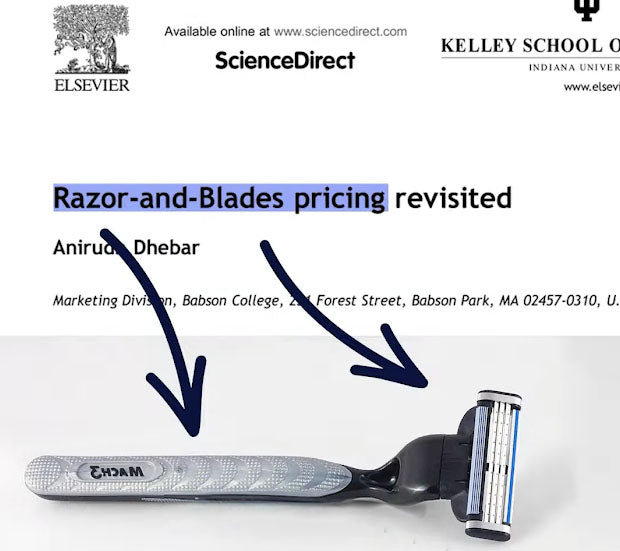
What is the razor and blade revenue model?
What Do Razors and Printers Have in Common? More Than You Might Think
At first glance, razors and printers might seem worlds apart. However, they share a common business strategy known as the "razor and blade model." This model involves companies offering a durable product (the "razor") at a low price but making up for it by charging high prices for the consumables (the "blades").
The Razor and Blade Model
This pricing strategy locks consumers into continuous spending due to proprietary technology. Once you buy a specific razor or printer, you're often forced to buy the corresponding, and typically expensive, ink cartridges or blades from the same company. This model can lead to significant ongoing costs that far exceed the initial purchase price.
Time to Rethink Your Purchases
It’s time to rethink how we buy what we buy. Don’t get locked into overpaying.
Conclusion
The razor and blade revenue model is a business strategy where companies offer a primary product at a low price to attract customers, then charge higher prices for the consumables needed to use that product. This approach locks consumers into a cycle of continuous spending due to proprietary technology, leading to higher long-term costs.
Understanding this model helps consumers make more informed decisions, seeking alternatives that prioritize transparency and value. By staying informed and choosing wisely, you can avoid the pitfalls of hidden costs and enjoy products that truly serve your interests.
Sources
- Dhebar, A. (2016). Razor-and-Blades pricing revisited. Business Horizons. Freeman, R. E., Martin, K., & Parmar, B. (2007). Stakeholder capitalism. Journal of Business Ethics.
- Tattan-Birch, H., Brown, J., & Jackson, S. E. (2022). ‘Give ‘em the vape, sell ‘em the pods’: razor-and-blades methods of pod e-cigarette pricing. Tobacco Control, 31(6), 773-774.

